Comparing Saucony vs New Balance really comes down to a lot of personal preference. And of course some proprietary technologies, fit, and feel. They’re easily among the most recognizable brands and for good reason; both make exceptional running shoes for various running styles and body types.
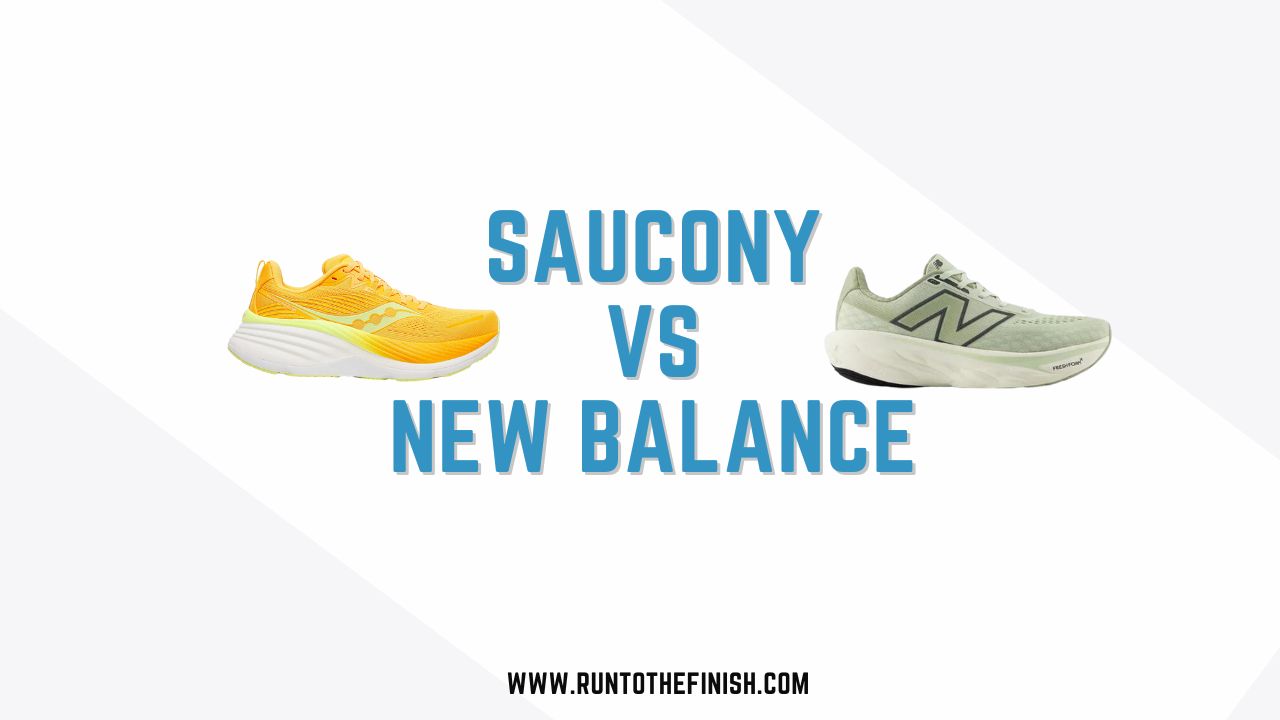
Both brands are known for their quality and offer a variety of models to suit different needs like overpronation, cushioning, and various styles of running.
And don’t worry, just because I share a last name with one brand doesn’t mean my opinion is biased. ;)
New Balance’s top models are the 1080 and the 860, which are designed for neutral to mild overpronators. Saucony’s most recognizable shoes are the Kinvara, Triumph and now the Endorphin line. So what does all of that mean?
Let’s look at some key differences between the shoe brands, then we’ll compare features and go head to head with individual shoes to help you find the best fit.
New Balance Vs Saucony Running Shoe Models
Let’s look at their top models in each of the main categories. There’s no winner declared here because all are great shoes, it’s just about which one is best for your foot.
Did you notice I even said the brands in reverse order this time…seriously no favorites, I have run in both brands many different times over the years.
Stability Running Shoe
👉Fresh Foam 860 V 14
The New Balance Fresh Foam 860 has a dual-density medial post in the midsole that helps with overpronation, which will stabilize your foot strike and help to keep you in better alignment.
A combination of hard and soft rubbers on the outsole of the Fresh Foam 860 imparts grip, while the firm midsole is useful at runs of a higher pace.
The updated Fresh Foam X midsole provides more cushioning than before. With 38mm in the heel and 30mm in the forefoot (up from 35mm and 25mm in the v13), it feels softer underfoot while still maintaining the firmness needed for stability.
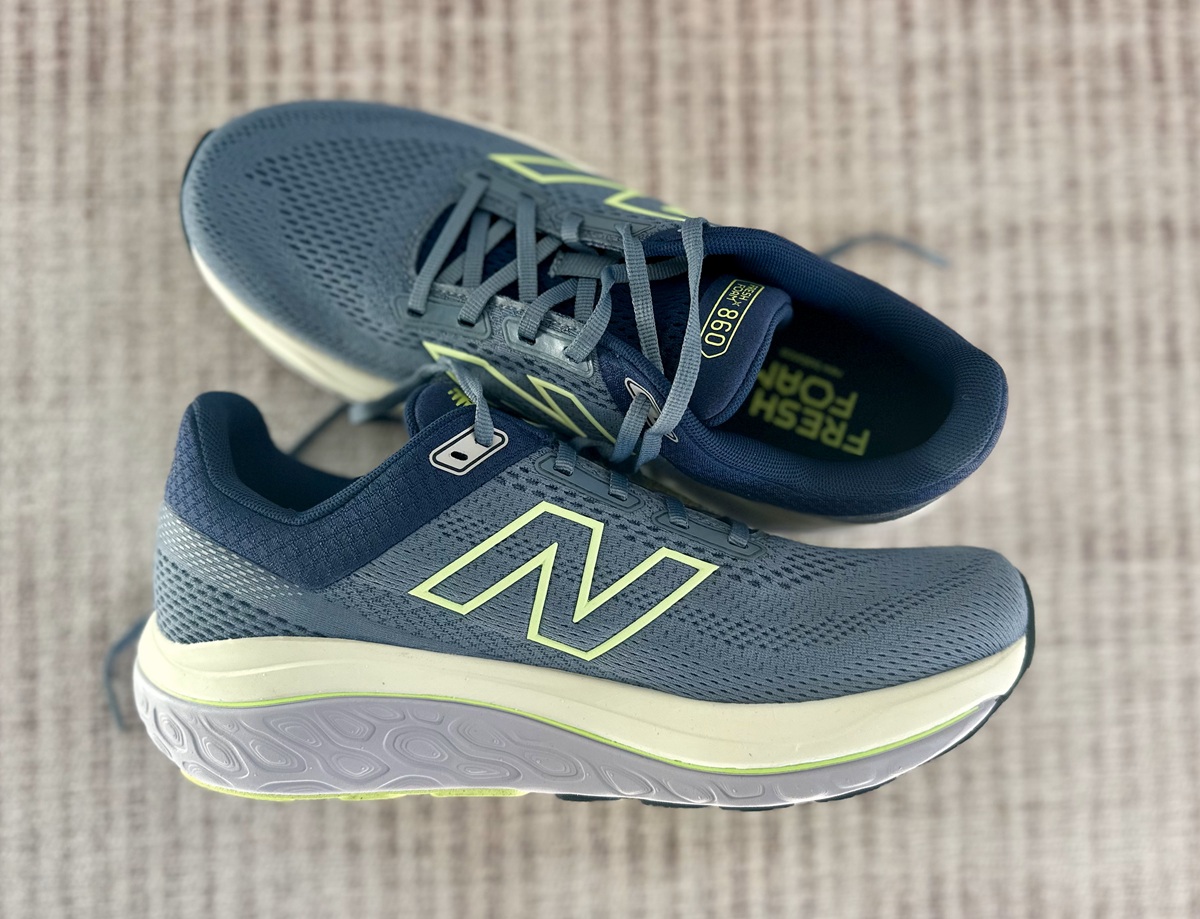
The breathable mesh upper keeps your feet cool and secure, and the cushioning is second to none.
It’s a stability running shoe that’s surprisingly light. It has a stretchy, spacious forefoot and toe box which feels comfortable and not too loose or sloppy.
- Weight: 10.8 oz Men’s, 8.7 oz Women’s
- Heel Drop: 8 mm
- Stack Height: 38mm
- Available in core and seasonal colors
- Available in narrow, wide and extra wide (in limited colors)
- Available on Newbalance.com for $140
- Read our full review of the New Balance 860v14 here >>
There are A LOT Of fresh foam numbered shoes, so note that the 880 is neutral cushion. The 860 is the stability option.
👉Saucony Guide
The Saucony Guide is a stability running shoe that is designed for runners who need more support and guidance. It features a medial post, which is a firmer foam that helps to prevent overpronation and provides stability.
That being said, it’s not HUGELY structured. Compared to older stability shoes, this isn’t going to be super firm or provide massive support. It’s just providing a little bit of extra for those who find their arches dropping or have flat feet.
This shoe actually feels MORE cushioned than the Ride. Which makes sense because in the newest model, they intentionally increased the cushion.
Checkout my comparison of the Saucony Ride vs Guide – two of their most popular shoes that are often confused for each other because of the similarities in fit and feel.
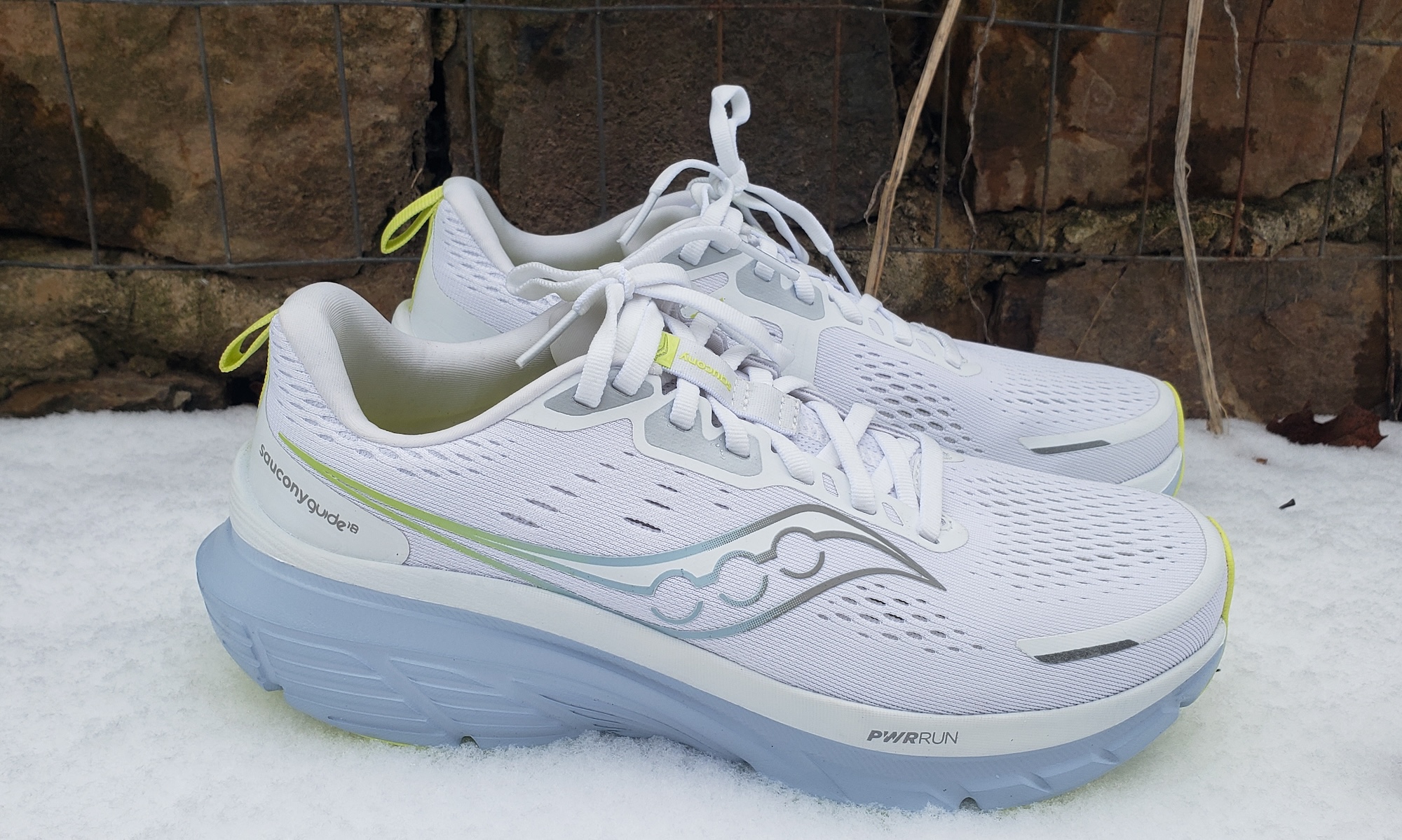
The upper of the Saucony Guide is made of breathable mesh material that offers flexibility and a secure fit. Moving slightly away from past posts to provide stability is their new Hollow Tech medial support. The TPU medial support element placed in rear of the midsole provides support without the rigid and firm feeling of a medial post, seen in most shoes.
- Weight: 9.6 oz Men’s, 8.6 oz Women’s
- Heel Drop: 6 mm
- 13 Colors for Women’s, 12 for Men’s
- Available in wide and extra wide
- Available on Saucony.com for $140
- Chek out our full review of the Saucony Guide 18 here >>
Neutral Running Shoe
👉Fresh Foam 880 v 15
While some runners are flocking to carbon plated shoes, we simply don’t want those as our every day trainers. We want something that is solid and dependable like this neutral shoe that also has a great wide toebox, allowing you to get full power out of those feet.
The New Balance 880 is a popular running shoe that strikes a balance between cushioning and stability. Designed as a neutral running shoe, it offers a supportive and comfortable ride for runners who desire a touch of stability without compromising on cushioning.
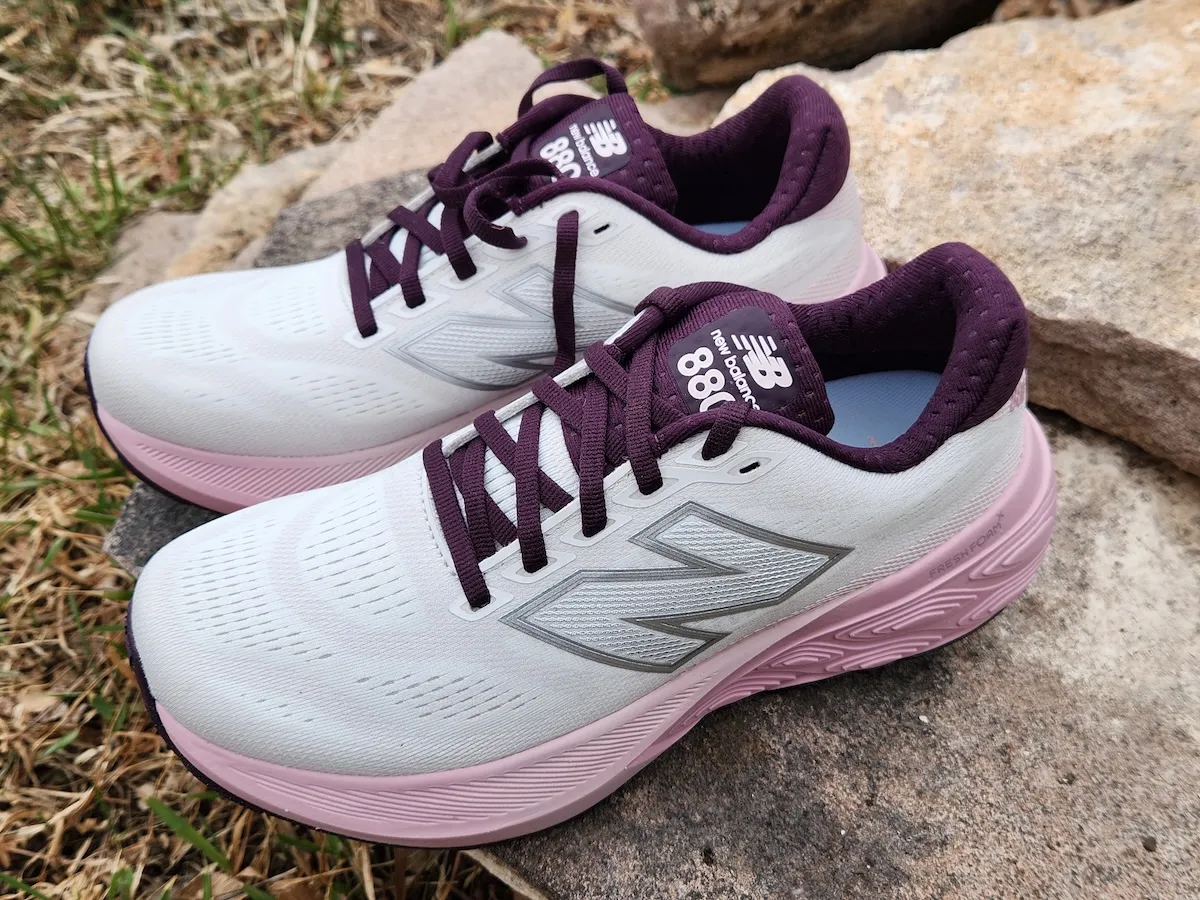
It’s going to have enough cushion for long runs without being overly plush and still providing just a hint of stability with the bigger platform. I can concur from my running in fresh foam that you absolutely notice the cushion, but it’s still a solid shoe.
The upper part of the shoe is made of engineered mesh that ensures proper breathability and comfort, though some would say it’s warmer than the knit of the 1080. This shoe is suitable for runners who require a combo of little support and cushioning for their runs.
- Weight: 10.7 oz Men’s, 8.4 Women’s
- Stack Height (heel/forefoot): 40.5mm / 34.5mm
- Heel drop: 6mm
- Available in 7 colors
- Available in several widths: narrow, standard, wide and x-wide
- Available on newbalance.com for $139.99
- Check out our full review of the New Balance 880 v 15 here >>
👉Saucony Ride or Saucony Kinvara
These two are the most popular neutral running shoes from Saucony. Both have been around for many years and continued to improve.
What’s the difference in the Ride vs Kinvara?
- Cushioning is thinner on the Kinvara making it often more suitable for half marathon and under
- Kinvara is often seen as your tempo run or race shoe, the Ride your everyday training
The Ride is focused on cushioning and support, while the Kinvara is designed for a more natural and lightweight feel.
Saucony Ride
The Saucony Ride is a versatile neutral running shoe that provides a smooth ride for runners. It is designed for runners who want a neutral shoe with moderate cushioning, a responsive ride, and a comfortable fit.
If you already know that you want MORE cushion then the Triumph is going to be your neutral shoe of choice. Of the three, it’s the shoe that I recommend most for long distance runners.
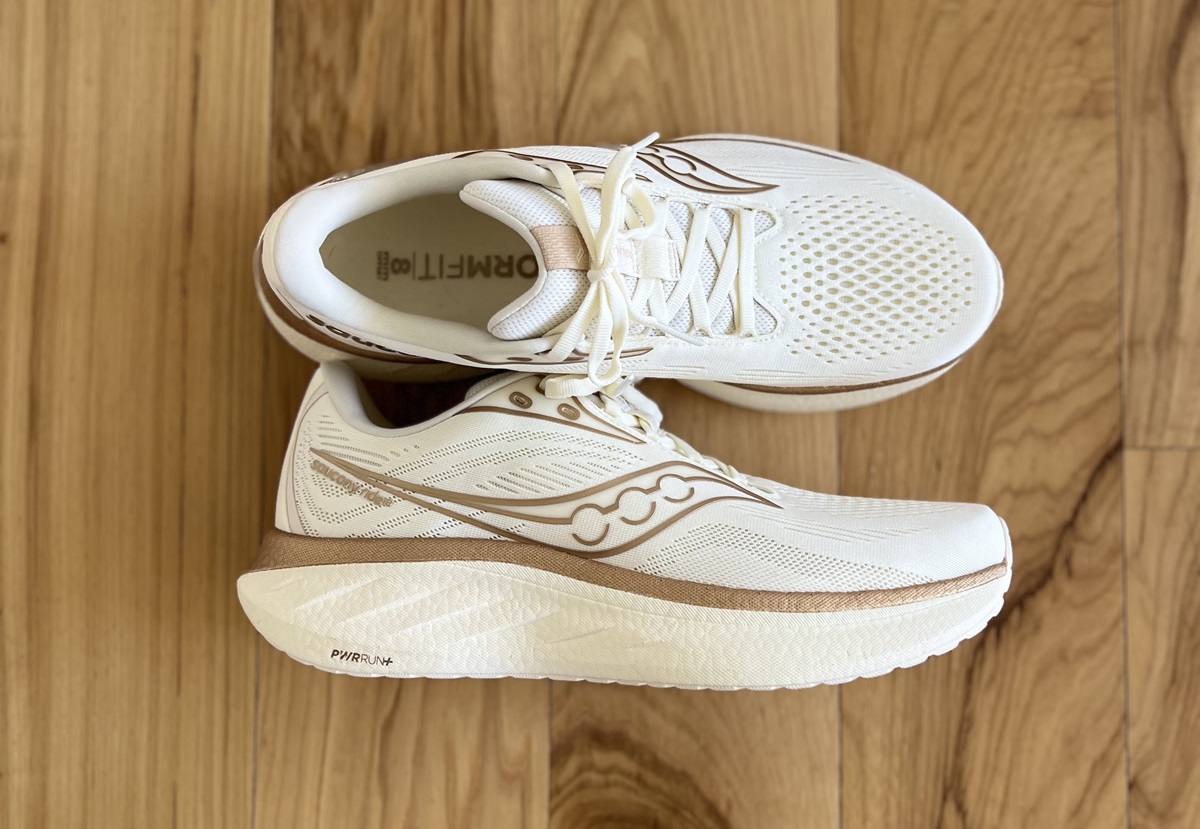
It’s not flashy, it doesn’t have huge selling points, it’s just a trainer that feels pretty nice and will last!
While it’s not a stability shoe, we’ve always found the Ride to have some elements which inherently make it feel more stable.
You could certainly do some speed work in this shoe, but it’s probably not what we’d reach for on those days. It doesn’t feel fast, but you aren’t held back by mounds of cushion either. Again, it reminds us of what ALL running shoes used to feel like, but with nicer cushion.
- Heel toe drop: 8mm
- Weight: 8 oz women’s, 9.1 oz men’s
- Stack: 35 mm
- Usage: Long run shoe
- Available in fifteen colors (wowzers)
- Available in Wide
- Available at Saucony.com and RunningWarehouse.com $140
- Check out our full review of the Saucony Ride 18 here >>
Saucony Kinvara
This has been one of my go to shoe models for nearly a decade. That being said, the Kinvara has changed over that time. It’s now a slightly more cushioned shoe with a bit more stack height (because everything seems to be increasing in stack height).
That being said, I still love it.
It’s my easy pick for what shoe I want to put miles on during vacation because I can use it for speed or easy runs.
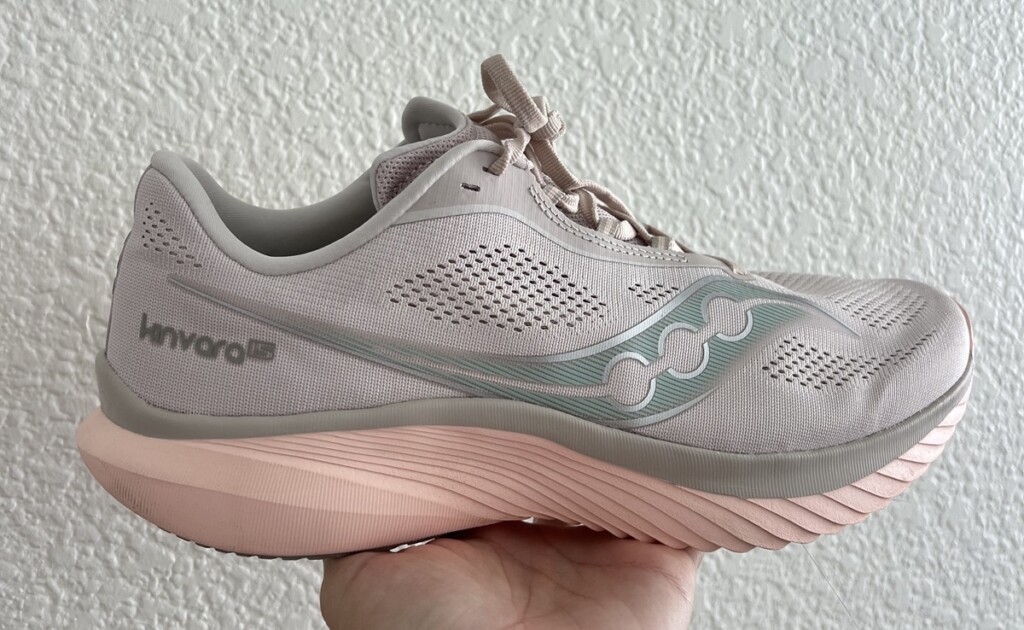
The Saucony Kinvara 15 is a winning option for runners who are looking for a lightweight and responsive shoe that provides enough cushioning and support for up to the half marathon. Now, I have actually worn the Kinvara in a marathon, but with what’s on the market now it wouldn’t be my go to.
The shoe’s upper is made from a breathable mesh material that allows for maximum airflow and helps to keep feet cool and dry. This one has a bootie style fit, meaning that the tongue is attached. I LOVE this because it means it’s not going to be moving all over while I run.
- Weight: 7.0 oz Men’s, 6.2 oz Women’s
- Heel drop: 4 mm
- Available in 8 colors
- Available in wide
- Available now on Saucony.com ($120)
- Read our full review of the Saucony Kinvara 15 here >>
Cushioned Running Shoe
CONFESSION! Both of these shoes are in my weekly training rotation. They’re also on my best marathon training shoes list because I love them so much.
👉Fresh Foam 1080 V14
Listen, I like a good cushioned shoe and this one fits the bill. It’s become one of my go to long run shoes.
I’ve actually gone through 5 pairs of this shoe in the last few years in various models. The rave reviews make complete sense to me as someone who likes a good max cushioned shoe on long run days. The 14 definitely feels a little softer than some previous models, so you aren’t getting that energy return, but lots of cushion.
The base of the shoe is just slightly more flared or wider now, which also adds some stability. That’s a key feature that was lacking when many started shoving more foam into the midsole.
One notable change from last year, the shoe gained up 1 oz of weight. Which seems a little odd when the stack height remained the same, but seems to be related to adding some additional grip along the outsole which does make the shoe better in wet conditions.
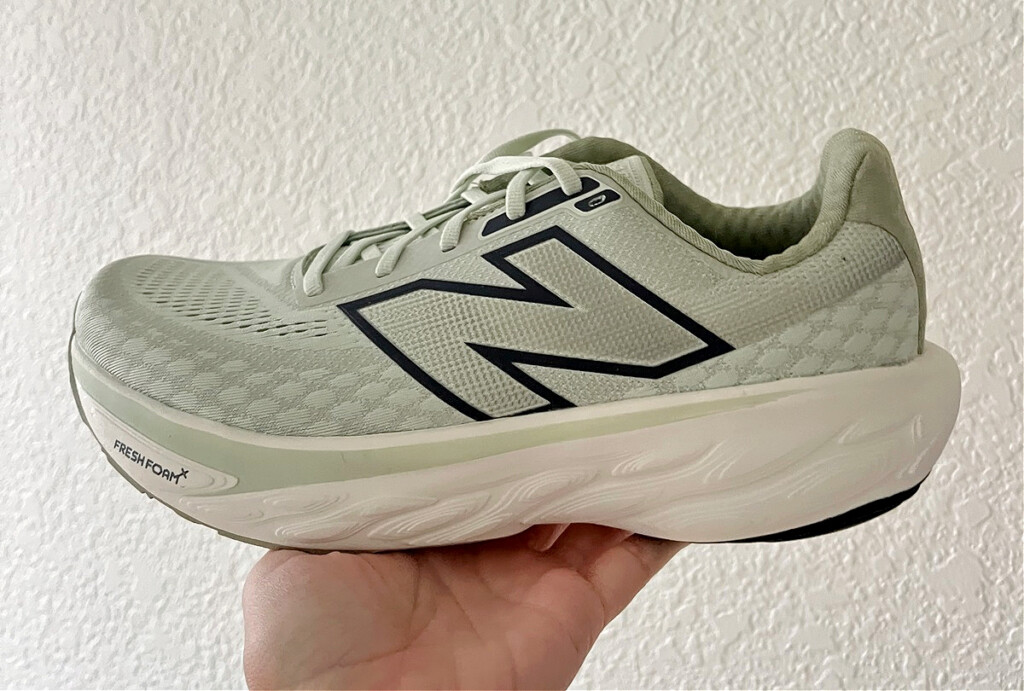
- Weight: 10.5oz Men’s, 8.3 oz Women’s
- Heel Drop: 6mm
- Available on NewBalance.com for $165
- See my full review of the New Balance 1080 v14
👉Saucony Triumph 23
I’ve used the last few models of the Triumph for MANY training miles and definitely recommend.
The Saucony Triumph is known for its plush cushioning, which you can absolutely feel more than in the Saucony Ride. The foam combo makes it durable. The lower stack is more comfortable for so many and now they lighter weight is an added bonus on those long run days.
It’s a shoe that the middle and back of the pack can happily wear on half marathon and marathon race days!
While it’s by no means a speed shoe, the foam used does help with energy return compared to other big plush cushioned running shoes.
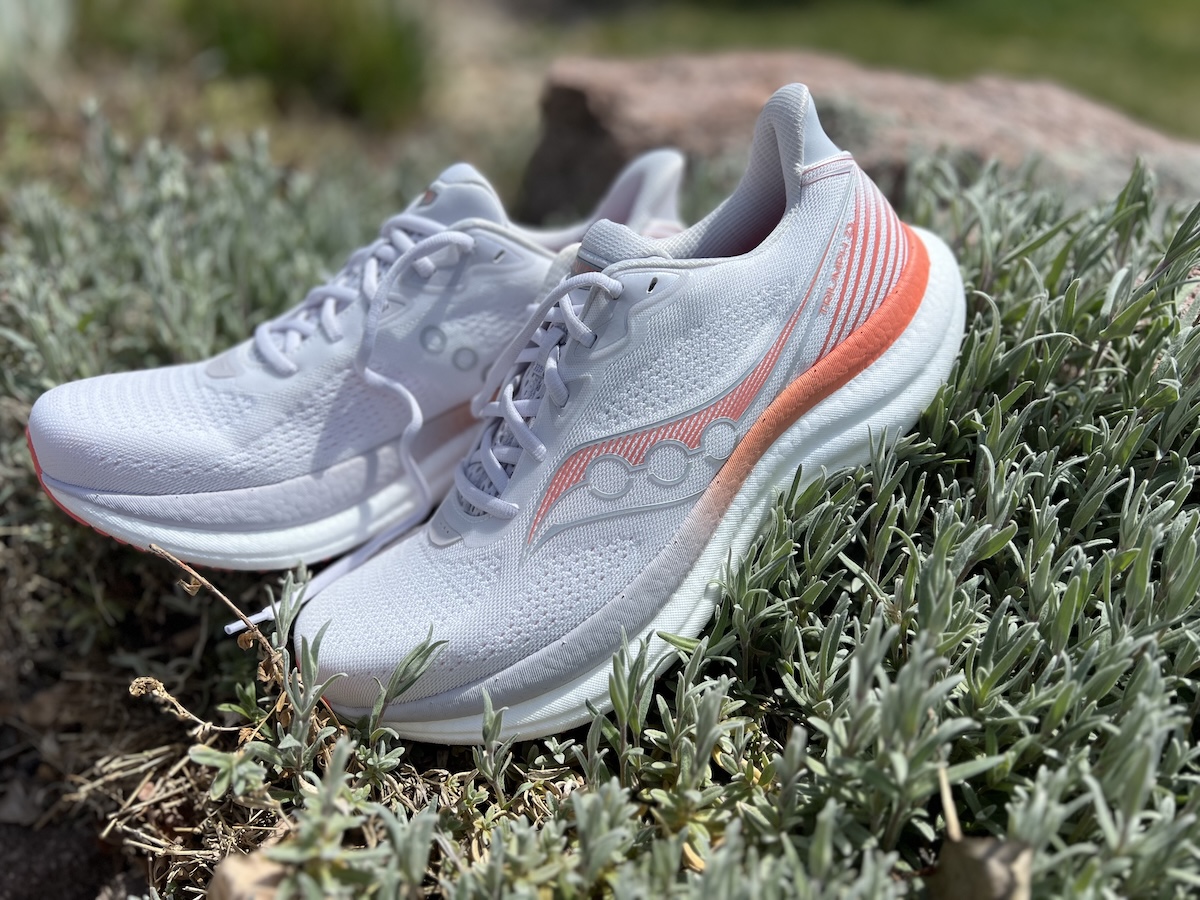
Whether you’re heading out for a 5k or your 20-mile long run, this shoe provides the comfort and support you need, especially on the days when your legs are feeling it a bit more than usual.
- Weight: 9.2 oz men’s, 8.4 oz women’s
- Heel drop: 10 mm
- Stack: 37 mm
- Available in 10 colors
- Available in wide
- Available now on Saucony.com $160
- Check out our full review of the Saucony Triumph 23 here >>
Trail Running Shoes
Neither brand has an extensive trail line up, but they do both have great options!
👉New Balance Fresh Foam Hiero
This shoe has gotten a lot of love over the years from runners. I think that’s because it could fall in to the road to trail category. You’re getting all that fresh foam and feeling that you love of a road shoe, but with some extra on the outsole!
These have what they called micro traction lugs. They’re going to work on most trails and give you even a good winter option, but probably not for the more rugged terrain or slippy trails where we want some big lugs.
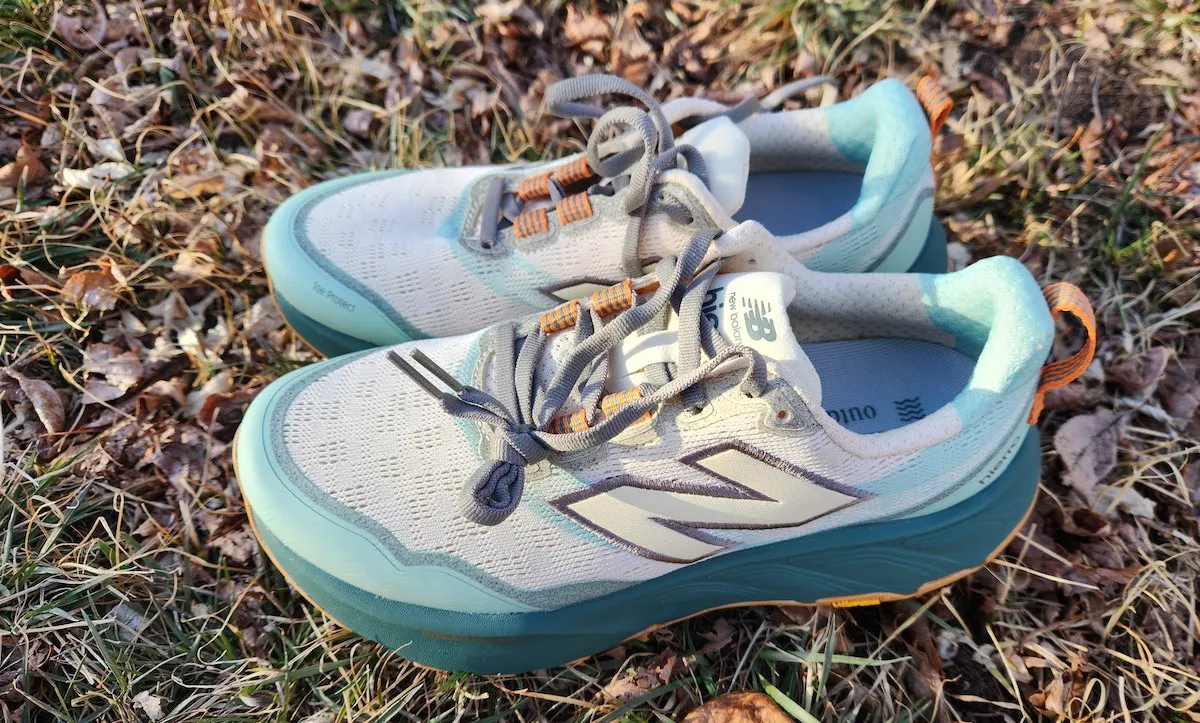
The shoe’s supportive design and secure fit contribute to stability on uneven terrain, minimizing the risk of injuries. Additionally, the breathable upper materials promote airflow, preventing moisture buildup and keeping your feet cool and dry throughout your trail walks.
- Weight: 10.3 oz Men’s, 8.3 oz Women’s
- Heel drop: 4 mm
- 3 colors available
- Available in regular, wide and x-wide for certain colorways
- Available from Newbalance.com for $155
👉Saucony Peregrine 15
This has been a trail running shoe that myself and other testers have loved for years. They had a few misses around model 10, but since then we’ve gotten back on track!
It’s slightly more narrow fit than some other brands, which works for some of us.
I always feel really confident in the traction of this show and I like the light guard just above the cushion to keep my toes from being wet in the grass or light snow.
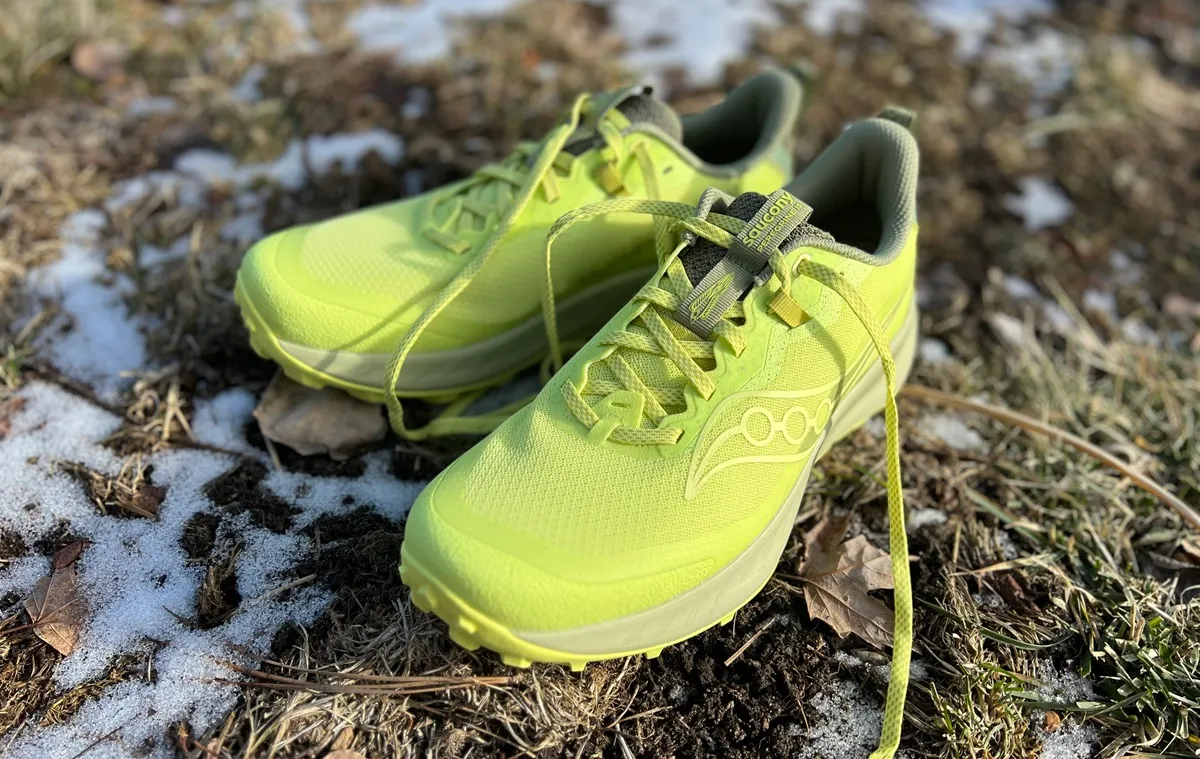
The Saucony Peregrine is a popular and versatile trail running shoe that has gained a strong reputation among trail runners and outdoor enthusiasts. Designed to handle a variety of terrains and conditions, the Peregrine combines responsiveness, durability, and traction to provide a reliable and enjoyable off-road running experience.
For me, I appreciate that it’s not one of the overbuilt trail shoes and the traction is fabulous. They have also taken some weight out of the updated models!
BONUS this is a lower stack height than so many of the current shoe trends and many prefer that on the trails to feel more stable.
- Weight: 9.7 oz Men’s, 8.7 oz Women’s
- Heel drop: 4 mm
- Available in wide
- Available in 15 colors (that’s insane)
- Available at Saucony.com for $140
- Read our full Saucony Peregrine 15 review >>
Carbon Fiber Plate Shoes
Are they cool new technology, yes. Do they last as long as your other shoes, nope.
So if you want to test these out use them for speed work and then race day! Watch my detailed video on how Carbon Fiber Shoes work.
👉New Balance FuelCell Super Comp Elite v4
The SuperComp Elite is New Balance’s high-performance carbon-plated racing shoe, designed for long-distance runners seeking a combination of speed, responsiveness, and cushioning.
The shoe boasts an eye-catching color scheme and distinctive geometric design, as well as easy rocker shape. And the midsole is THICK, made of peba foam (more on that in a bit), layered around a thin carbon fiber plate.
Our gear tester, Jeff, took these for a spin in the NYC marathon and said they’ll be a great option for the 4 hour marathoner!
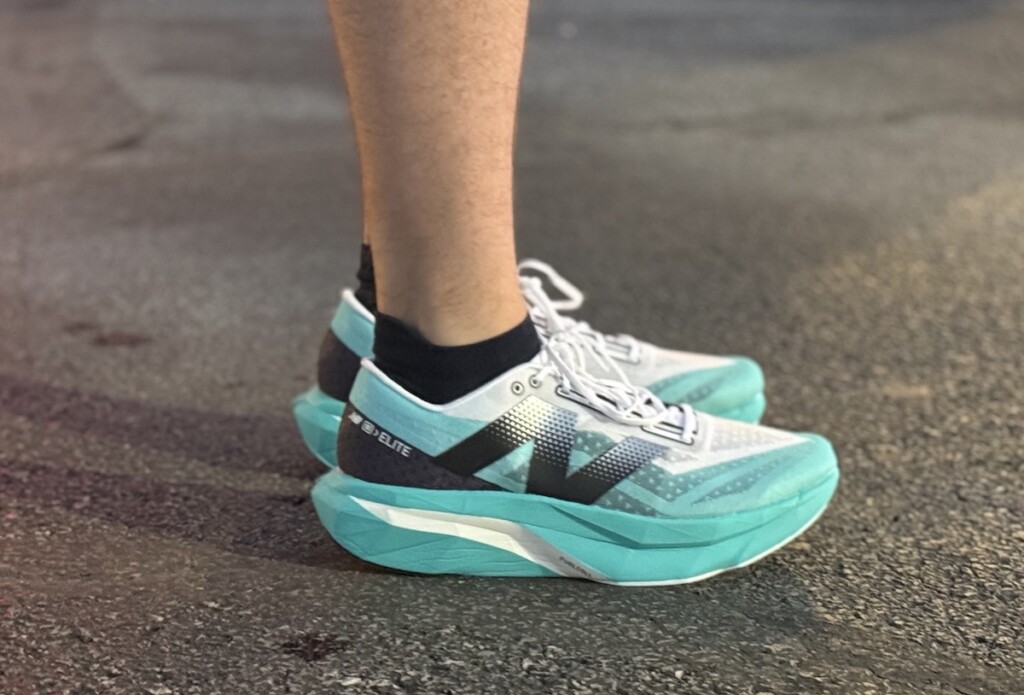
- Weight: 8.1 oz (Men), 7.2 oz (Women)
- Heel Drop: 4mm
- Available at newbalance.com for $250
- Read our full review of the NB Supercomp Elite V4 >>
👉Saucony Endorphin Elite
While it moves away from the firm, snappy ride of its predecessor, theSaucony Endorphin Elite 2 delivers bounce you feel in every stride, combining exceptional speed and comfort to make it a standout choice for your next race day.
Designed to help runners unlock their speed, the Saucony Endorphin Elite 2 is a bouncy, high-performance supershoe built for half-marathon to marathon distances. Its standout feature is Saucony’s incrediRUN foam, which delivers insane energy return and next-level cushioning—exactly what you want on race day.
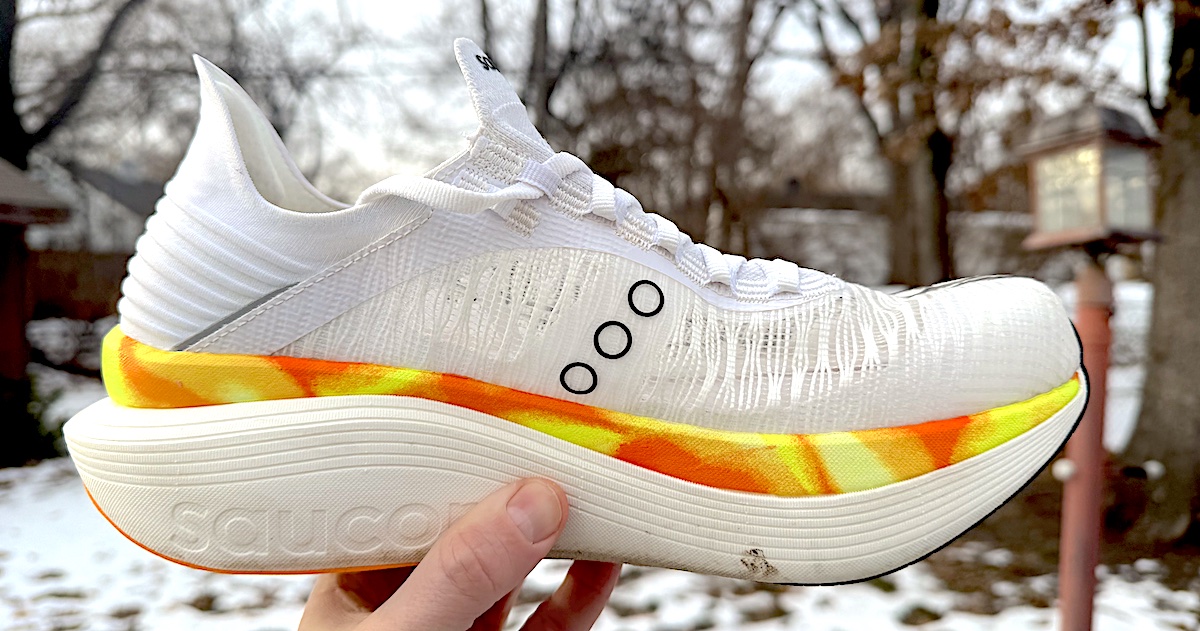
The re-engineered upper, made from ultra-light TPE yarn, works seamlessly with the flat-knit tongue to deliver a snug, sock-like fit that remains comfortably secure through every phase of your run.
It has an accommodating forefoot and midfoot with a slightly-snug toe box. If you’re planning to wear this shoe for a half marathon or marathon, I suggest bumping up a half-size as our feet tend to swell a bit during longer efforts.
The shoe strikes a fine balance between comfort and performance, making it a frontrunner (sorry, not sorry for the pun) for those who crave a softer, more energetic ride.
- Weight: 7oz Unisex sizing
- Heel drop: 8mm
- Available in 2 colors
- Not available in wide
- Available at Saucony.com for $275
- Read our full review of the Saucony Endorphin Elite 2 here >>
What about the Endorphin Line?
Because Saucony really shook things up introducing a whole new line of shoes, it feels like there needs to be at least some discussion here!
One of the big things they talk about is the Speed Roll to help roll your foot forward, which is actually pretty similar to the rocker that Skechers put in their running shoes from the start.
- Endorphin Pro – Designed for speed with the carbon fiber plate, this is your race shoe
- Endorphin Shift – This feels like a cushioned slightly stabilizing shoe, good for everyday training.
- Endorphin Speed – Also designed to be a neutral, cushioned shoe you can take to the race, but without the carbon fiber plat
- Coming in 2025 the Endorphin Trainer
Watch my detailed video on how Carbon Fiber Shoes work.
New Balance vs Saucony Feature Comparison
Both brands have been around for a very long time and are leaders in running shoe design. They both offer various technologies to aid with comfort, support, stability, and cushion. Where they differ most are in the fit.
The following breaks down each shoe based on the components buyers need to consider when purchasing a running shoe.
It’s gonna get a little TECHY…so you can just skip on down to the specific model comparison if you want, but personally if I’m shelling out $150 for shoes, I kinda want to know why.
Durability
The lifespan of shoes from both companies is fairly comparable.
- Saucony states their shoes last around 400 miles, which is pretty average. The new Endorphin pro with the carbon fiber plate is more like a racing shoe and therefore only expected to last around 200 miles.
- New Balance shoes have a life expectancy ranging from 300 to 500 miles, or three to six months, depending on your monthly mileage.
Determining when to replace running shoes, of course, all depends on your gait, weight, and whether you run mostly on trail or road.
Saucony vs New Balance Sizing
Saucony has their own Shoe Advisor to help put you in the right model. I’ve always found them to run true to size, but some are for a more narrow foot.
Their often lower heel to toe drop and cushion make them a favorite of distance runners, who find the decreased drop helps with issues like IT Band Syndrome and ensures they are working on hip strength over a shoe correcting a weakness.
New Balance is one of the few running shoes that offer wide widths and go up to a lot more sizes. This is one reason they are so popular among workers.
Note, they also offer 2A which is extra narrow. And like most brands, they have a shoe finder to help you decide what might be the best fit.
Additionally, their shoe numbering system actually means something!! The last 2 digits tell you about the type of shoe.
40 (Optimal Control):
Shoes in this category provide superior control, stability, cushioning and support for biomechanical needs, such as pronation or low arches (e.g., 940, 1540).
50 (Fitness Running):
For training on roads or for indoor workouts, the 50 series offers the combination of visual attitude and innovation with the responsiveness and power athletes need.
60 (Stability):
Designs that offer industry-leading stability to reduce pronation while also providing unparalleled cushioning and comfort (e.g., 860).
70 (Light Stability):
The perfect combination of stability and speed, all in a lighter, sleek profile designed for runners who train at a faster pace (e.g., 770).
80 (Neutral):
For high-mileage runners who require light shoes and the protection of superior cushioning (e.g., 1080).
90 (Speed):
For faster runners who want every advantage, including a superior ride and fit. The choice styles for professional and nonprofessional speed and distance runners (e.g., 890).
Cushioning
Saucony has transitioned most of their shoes to PWRRUN technology, which they promote as a better than the standard EVA foam used by most brands.
- PWRRUN+ midsole cushioning provides more flexibility, durability, and springiness in a foam that’s 25% lighter
- Again and again their focus comes back to lighter, flexible for more power in your take off and more energy return
New Balance utilizes Fresh Foam and FuelCell foam depending upon the shoe. Both are designed to provide a lot of cushion without the weight. FuelCell is a nitrogen infused foam which provides additional softness and responsiveness.
Stability
Saucony has been transitioning to less aggressive stability tools, ensuring the shoe is not over correcting or doing the work for you. They are doing this largely by increasing stack height.
They utilize a medial post (which is a device within the midsole that is firmer) to help provide control and a TPU heel plate which again makes the rides slightly firmer and adds control. Thanks to the cushioning, you don’t so much notice the stiffness and reap the benefits.
New Balance utilizes a couple of tools to provide stability. The first is that similar to HOKA all of their shoes have a bigger platform, which naturally means more stability.
Then they have an S Curve to help with that side to side stability and a Ultra Heel that flares away from the ankle for comfort, while keeping your heel firmly in the shoe.
Affordability
The prices between the two brands are fairly comparable. Saucony prices range between $100 to $170, while New Balance start at a slightly lower price at $100 to $140.
The most popular models for both brands are priced toward the higher range. The Endorphin line being over $200 for carbon fiber.
You’ll notice that every brand offers a range and this is indeed due to a difference in technology and where they sell the shoe. They know that the big box store can sell the shoe with less in it, while the local running store needs to be best for dedicated runners.
The Main Differences Saucony vs New Balance
Saucony and New Balance offer similar features and models for all kinds of runners, from the casual runner to extreme marathoner to the flat-footed or high-arched.
I break down the differences in more detail below, but here’s a quick overview of each brand:
Saucony Running Shoes
- Often noted as fitting a more narrow foot, with a smaller toebox
- Wide range of heel drops from traditional 12mm to lower 4mm
- Well known for the casual shoes as well as their running shoes
- Focus is on lighter shoes that provide maximum comfort
- Has an ongoing Fit Tester program to continually update shoes
New Balance Running Shoes
- Offers wider shoes than most brands
- Thicker midsole provides more stability
- Makes more shoes in the US than any other brand
- Also big in the athleisure market
I’ve worn both brands and will add some personal thoughts, along with links to detailed reviews.
If you’re looking for other comparisons, checkout New Balance vs Brooks or Saucony vs HOKA.
How do you say Saucony?
Since I used to get this question a ton wearing my Kinvaras, let me help you out.
Sock-a-knee.
It’s actually named after a creek in Pennsylvania and their logo is to represent the flow of water! They really love places for shoe names. I got to visit the actual towns of Kinvara and Kilkenny in Ireland, just a few of their shoe names.
More about Saucony
Like another well known running brand (New Balance), Saucony started it’s first factory in 1898. And by 1910 they were making running spikes…but few people were running or even looking for running shoes, so it wasn’t until the 1970’s that they started to grow.
First they became known for their casual shoe with it’s cool style and then, the big time hit.
Runner’s World featured them in 1979 as a top 10 running shoe. By the 80’s they were making shoes with a non-slip sole which was a big innovation.
Then came 2009 and the Saucony Kinvara – this one shoe changed many things about their design and philosophy. It was the more natural running shoe (yes during the barefoot trend). The new goal became how to strip shoes down, without sacrificing cushion and comfort.
Good performance, good health and good community are their guiding principles. You may have seen their hashtag #runforgood – which is really about doing good, giving back and finding sustainable practices.
More About New Balance
New Balance actually started in 1906 as an arch support company! But their focus on feet is one of the reasons they do offer more sizes and widths than most other brands.
And that’s exactly what the Boston based company focused on until 1960. Athletes had begun using the arch supports and they decided it was time to venture in to sneakers.
The Trackster was the first shoe with a rippled outsole that provide additional traction. It caught on as a track and cross country shoe regionally.
But in 1976 the company released it’s first shoe with the well known N logo on the side and it was a success. They stuck to their goal of providing shoes for a variety of feet and took advantage of the 80’s running boom.
Which is Better New Balance or Saucony?
New Balance and Saucony are two incredibly trusted running shoe brands on the market, but more important than brand is the fit of the shoe.
Your gait and feet will likely change over time and you may need to change shoes.
This is also why I recommend rotating through several pairs of shoes at once.
- Consider your foot width (more wides available in New Balance)
- Preference for a lower heel drop (generally Saucony)
- Stack height preference (Saucony is definitely going more maximal for more cushion)
And remember, just because these are two of the most well known brands on the market, there are still plenty of other shoe brands to select from if neither Saucony nor New Balance has the right shoe for you.
Keep in mind that shoe design can change, even with the same model, so always assess how the shoe fits every time you replace a pair.
For more help selecting the right shoe for you, don’t worry, I’ve got you:
- Best Narrow Foot Running Shoes
- Nike Alphafly vs Vaporfly Racing Shoes
- ALTRA running shoes review – Zero drop, wide toebox!
- Best Cheap Running Shoes
- On Cloud vs Brooks
Other ways to connect with Amanda
Instagram Daily Fun: RunToTheFinish
Facebook Community Chatter: RunToTheFinish
Sign Up to Receive a Weekly Newsletter with Top Running Tips and Laughs
The post Saucony Vs New Balance | Key Differences and Models appeared first on RunToTheFinish.
from RunToTheFinish https://ift.tt/jPUGeI6
Post a Comment
Post a Comment